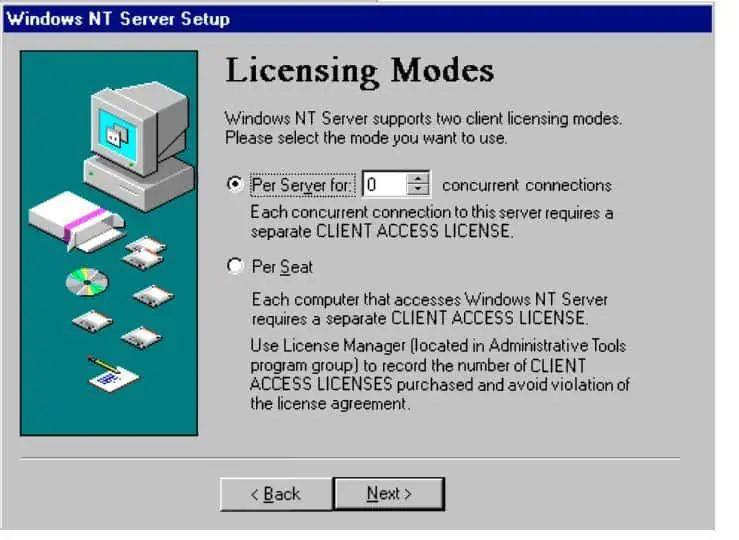Definition of CAL, or Client Access License, in Network Encyclopedia.
What is CAL (Client Access Licence)?
Client Access Licence is a license that grants a client machine access to a Microsoft BackOffice product running on a network of computers.

Every client computer on a network, regardless of whether it is running a Microsoft or non-Microsoft operating system, requires a client access license (CAL) if it will be accessing any of the following Microsoft Windows NT or Windows 2000 services:
- File services, for accessing shared files and folders on a server
- Print services, for accessing shared network printers
- Remote Access Service (RAS) or Routing and Remote Access Service (RRAS)
- File and Print Services for NetWare (FPNW)
- File and Print Services for Macintosh (FSM)
- Microsoft Transaction Server (MTS) and Microsoft Message Queue (MSMQ) Server access
- Windows NT Terminal Server functionality
Client access licenses can operate in one of two modes:
- Per Server licensing, which is based on concurrency of access to network resources
- Per Seat licensing, which is the more commonly implemented solution and is supported by all BackOffice applications
Per Server licensing
Per Server licensing is a licensing mode in which a client access license (CAL) is assigned to a particular server computer running a particular Microsoft BackOffice server product.
Each CAL allows only one connection per client computer to the particular BackOffice product. Per Server licensing can be applied to only the following BackOffice products: Microsoft Windows 2000 Server, Windows NT Server, Microsoft SQL Server, Microsoft SNA Server, and Microsoft Site Server.
Example
Consider a server computer on a network running Windows 2000 Server that has 25 Windows 2000 Server Per Server CALs. A total of 25 client computers can simultaneously connect to the Windows 2000 Server and access its services. If a twenty-sixth client tries to connect, it will be denied access and an entry will be written to the application log.
One client computer can connect to multiple shares on the server, but this is counted as only one connection for licensing purposes.
Per Server licensing is the preferred mode of licensing on small networks. However, you must purchase licenses equal to the maximum number of simultaneous connections you anticipate on each server for a particular BackOffice product. If you are not sure whether to use Per Seat or Per Server licensing, choose Per Server licensing. As more servers are added to your network, you can perform a one-time, one-way conversion of Per Server to Per Seat licenses as required. However, you cannot convert Per Seat licenses to Per Server licenses.
Per Seat licensing
Per Seat licensing is a licensing mode in which a client access license (CAL) is assigned to a particular client computer for a particular Microsoft BackOffice server product. A CAL allows the client to access the services of a particular BackOffice product that can be running on any server within the network.
Per Seat licensing can be applied to any BackOffice product that requires CALs, such as Microsoft Windows 2000 Server, Windows NT Server, Microsoft Exchange Server, Microsoft SQL Server, Microsoft SNA Server, Microsoft Site Server, and Microsoft Systems Management Server (SMS).
Example
Consider a network that consists of three servers running Windows 2000 Server and 50 assorted client computers running Windows 2000 Professional, Windows 98, Windows for Workgroups, Mac OS, and so forth. If you purchase 50 Per Seat licenses for Windows 2000 Server, one for each client, each client computer can connect to any of the three Windows 2000 Servers.
If you use Per Seat licensing, you must purchase a CAL for every client that accesses the BackOffice product, including non-Microsoft clients such as Macintosh and UNIX clients.
Per Seat licensing is often the preferred mode of licensing on networks with a large number of servers. On networks with only one or two servers, Per Server licensing might be a more economical option.